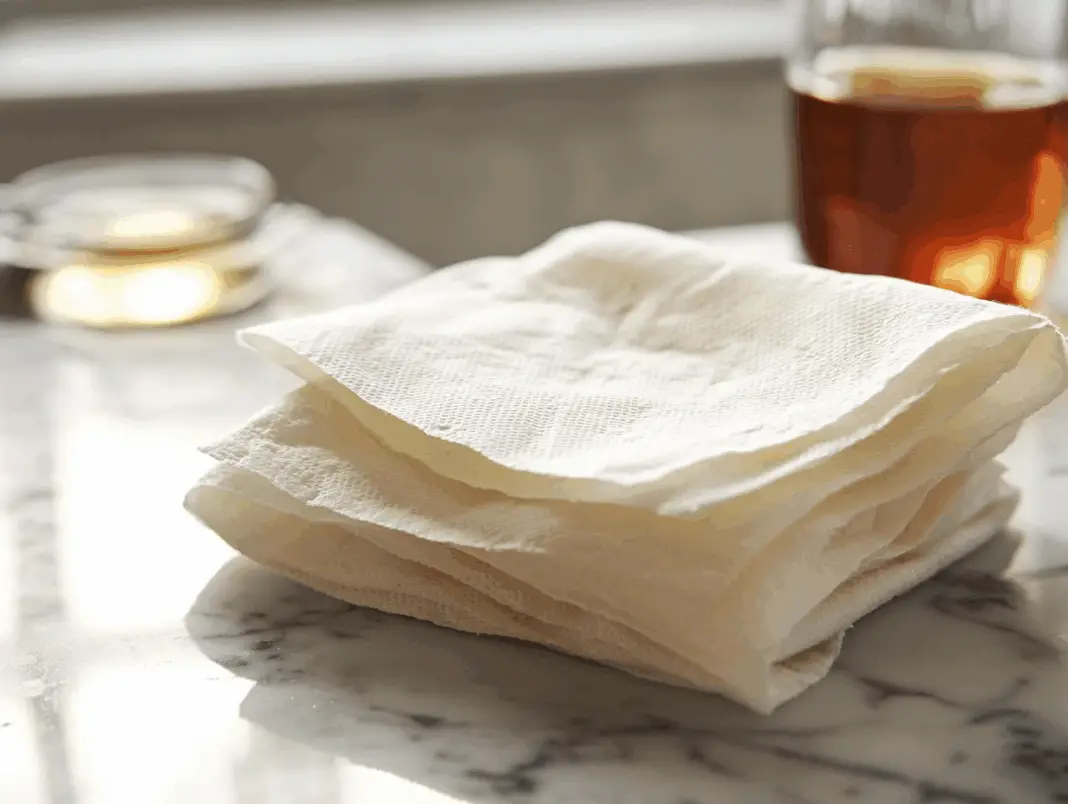Finding eight-legged visitors in your home can be startling, especially when they appear in unexpected places like your shower or kitchen counter. If you’re tired of screaming or calling for backup every time you spot a spider, there’s a simple solution using items you already have at home. No need for expensive store-bought repellents or harmful chemicals – just grab a roll of paper towels and a few common household ingredients. This easy trick has been helping homeowners keep their spaces spider-free with minimal effort, and it might be exactly what you need to reclaim your home from these creepy crawlers.
Why spiders enter your home in the first place
Spiders aren’t trying to scare you – they’re simply looking for food, shelter, and the right conditions to build their webs. Your home becomes attractive to spiders when it provides these basic needs. Dark corners, cluttered areas, and undisturbed spaces become perfect hideouts for these eight-legged creatures. They’re especially drawn to places where they can find other insects to eat, which is why you’ll often spot them in kitchens, bathrooms, basements, and garages. Understanding why spiders come inside is the first step to keeping them out, as you can then address the conditions that make your home appealing to them.
The good news is that most house spiders are harmless and actually help control other pest populations in your home. However, that doesn’t mean you want them building webs in every corner. Spiders tend to be more active during certain times of the year, particularly in fall when they’re seeking warmer places as temperatures drop outside. They can squeeze through tiny cracks and gaps around windows, doors, and foundations. Once inside, they quickly establish themselves in quiet areas where they won’t be disturbed, spinning webs and potentially laying hundreds of eggs if conditions are right.
The simple paper towel and vinegar method
Here’s where our paper towel trick comes in handy – it’s incredibly simple yet surprisingly effective. Start by mixing equal parts white vinegar and water in a small bowl. Vinegar contains acetic acid that spiders absolutely cannot stand. The strong smell overwhelms their senses and irritates them on contact. Take a sheet of paper towel and fold it in half, then dip it into your vinegar solution until it’s thoroughly dampened but not dripping wet. Now place these vinegar-soaked paper towels in areas where spiders tend to congregate – corners of rooms, along windowsills, near doorframes, or under furniture.
Replace these paper towel strips every couple of days to maintain their effectiveness. The vinegar scent acts as a barrier that spiders won’t want to cross. For even better results, wipe down surfaces with the vinegar solution before placing the paper towels. You can also add a few drops of peppermint essential oil to your vinegar mixture for an extra punch of spider-repelling power. The combination of vinegar’s acidity and peppermint’s strong scent creates an environment that spiders will actively avoid, keeping them from setting up shop in your home without using harmful chemicals.
Essential oil paper towel barriers
If you’re not a fan of the vinegar smell, essential oils offer an equally effective and more pleasant-smelling alternative. Spiders have very sensitive sensory organs that help them detect prey and navigate their environment. Strong-smelling essential oils overwhelm these sensory systems, making areas treated with them extremely uncomfortable for spiders. The most effective spider-repelling essential oils include peppermint, tea tree, lavender, and citrus varieties like lemon or orange. Simply add 5-10 drops of your chosen essential oil to a cup of water, dampen paper towels in this solution, and place them strategically around your home.
What makes this paper towel method so effective is the controlled release of the essential oil scent over time. Unlike spray applications that quickly dissipate, the paper towel slowly releases the aroma, creating a longer-lasting barrier. For maximum effectiveness, focus on entry points like windows and door frames, as well as corners where spiders typically build webs. You can also tuck these scented paper towels into closets, under sinks, and behind furniture. Many people find that tea tree oil works particularly well, as its strong medicinal scent seems to be especially offensive to spiders while smelling clean and fresh to humans.
The dish soap paper towel trap
Another effective paper towel trick involves using dish soap, which works in a completely different way than vinegar or essential oils. Dish soap breaks down the waxy protective layer on a spider’s exoskeleton, making it a highly effective spider deterrent. Create a solution by mixing a few tablespoons of liquid dish soap with warm water in a bowl. Stir gently to create a soapy mixture without too many bubbles. Soak paper towels in this solution, then place them in areas where spiders are frequently seen. The key is to create a barrier that spiders must cross, as the soap solution will stick to their legs and body.
Dish soaps with citrus scents work particularly well since spiders also dislike citrus odors. When a spider walks across the soap-treated paper towel, the soap clings to its body and begins to dehydrate it. This method is especially useful for targeted areas with active spider problems. For even better results, use citrus-scented dish soap in your mixture. You can also create a more concentrated solution to wipe down surfaces before placing the soap-treated paper towels. Some homeowners report success with layering their defense by using both soap-treated paper towels along baseboards and vinegar-treated ones around windows and doors.
Targeting spider entry points effectively
Spiders can squeeze through incredibly small gaps – openings as thin as a credit card are like open doors to them. To make your paper towel treatments most effective, focus on the entry points spiders use to get inside your home. Start by inspecting your home’s exterior for cracks, gaps around pipes, torn window screens, and spaces under doors. Once you’ve identified these entry points, you can use your paper towel treatments as part of a targeted defense strategy. Cut paper towels into strips and soak them in your chosen solution (vinegar, essential oil, or soap), then tuck them into cracks and crevices around windows, doors, and foundation gaps.
These treated paper towels create a scent barrier that deters spiders from entering through these gaps. For larger openings that need to be sealed permanently, remove the paper towels once they’re dry and apply caulk or weather stripping as needed. For added protection around windows, place fresh treated paper towels along the sills and replace them weekly. Door sweeps can help block gaps under exterior doors, but until you install them, a paper towel soaked in lavender essential oil and tucked into the gap can provide temporary protection. By focusing on entry points, you prevent the problem before spiders ever make it inside.
How to make your paper towel treatment last longer
The effectiveness of your paper towel spider repellent depends largely on how long the active ingredients keep working. There are several tricks to make your treatments last longer and work better. First, consider using thicker, premium paper towels that can hold more liquid without falling apart. These will release the repellent more slowly over time. If you’re using essential oils in your mixture, adding a tablespoon of vodka or rubbing alcohol helps the oil mix better with water and slows evaporation, making the scent last longer. For vinegar solutions, using apple cider vinegar instead of white vinegar can provide a slightly longer-lasting effect.
You can also create “refresher sprays” to rewet the paper towels every few days without having to replace them. Simply store your leftover solution in a spray bottle and lightly mist the paper towels when they begin to dry out. Another option is to place the treated paper towels inside small plastic containers with holes punched in the lids. This creates a slow-release diffuser effect that can last for weeks rather than days. For areas that are particularly prone to spider activity, consider layering your approach by using both the paper towel method and keeping the area clean and decluttered, as spiders are less likely to establish themselves in regularly disturbed areas.
Solving specific spider problem areas
Different areas of your home may attract different types of spiders, and each might require slightly modified approaches to your paper towel trick. Bathrooms often attract moisture-loving spiders, so adding a few drops of tea tree oil to your paper towel solution can be particularly effective here. Place treated paper towels behind toilets, under sinks, and in shower corners. In kitchens, spiders are often hunting for insects attracted to food, so use lemon or orange-scented solutions on paper towels placed in cabinet corners, behind appliances, and along baseboards. The combination of citrus and soap is particularly effective at deterring both spiders and the insects they feed on.
Basements present special challenges due to their darkness and often higher humidity. For these areas, use paper towels with a stronger concentration of essential oils or vinegar, and replace them more frequently. Place them in corners, along ceiling joints where webs often appear, and near any windows or vents. For outdoor spaces like porches and decks where spiders might gather before entering your home, use cedarwood oil in your paper towel solution. Many homeowners find this scent particularly effective for outdoor spider control, creating a barrier that prevents spiders from approaching your doors and windows in the first place.
When to change your paper towel treatments
Knowing when to replace your paper towel treatments is crucial for maintaining their effectiveness against spiders. As a general rule, paper towels treated with vinegar or dish soap solutions should be replaced every 3-5 days, as these solutions evaporate and lose potency relatively quickly. Essential oil treatments may last slightly longer, typically 5-7 days, before needing replacement. Visual cues can help you determine when it’s time for fresh treatments – when paper towels appear completely dry or no longer carry the scent of the active ingredient, it’s definitely time to replace them. You might also notice the paper towels beginning to collect dust or discolor, which reduces their effectiveness.
The environment also affects how quickly your treatments lose effectiveness. Paper towels placed in humid areas like bathrooms may stay damp longer but can develop mold if left too long. Those in very dry or sunny spots will dry out faster and need more frequent replacement. Seasonal changes should also guide your replacement schedule – during peak spider seasons (typically fall and spring in most regions), replace the paper towels more frequently. If you notice spiders returning to previously treated areas, that’s a clear sign your paper towel treatment needs refreshing. To make the task easier, set a regular schedule for replacement and keep a pre-mixed spray bottle of your solution ready to go.
Next time you spot a spider in your home, don’t panic – reach for a paper towel and your preferred solution instead. This simple, affordable trick has helped countless homeowners keep their spaces spider-free without harsh chemicals or expensive products. By understanding why spiders enter your home and using targeted treatments in problem areas, you can create an environment that naturally deters these unwanted guests. The best part? Everything you need is probably already in your kitchen cabinet.

